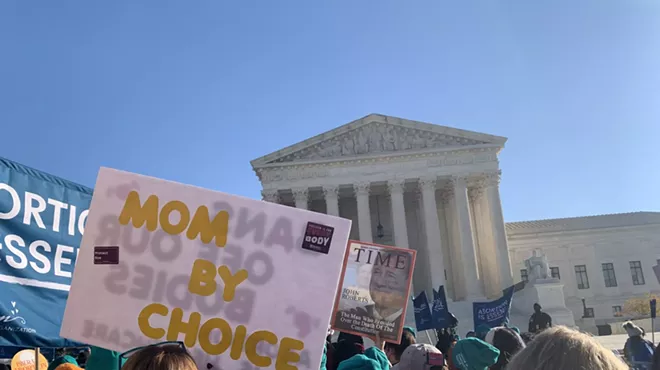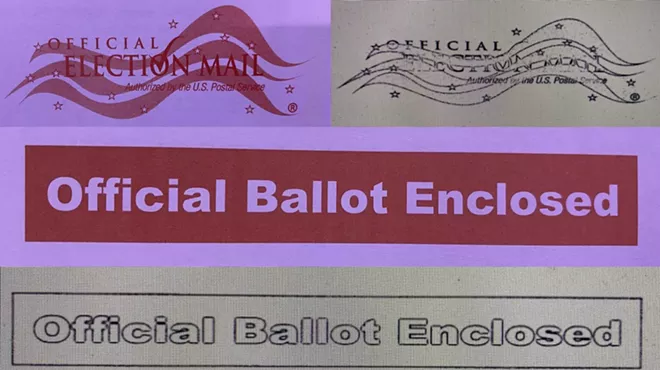Wednesday, October 4, 2017
The Best Way To Get Results-Based Funding Is To Be Well-Off and White
The results are in. The Arizona Department of Education published a list of all the schools getting results-based funding for the 2017-18 school year. There aren't any real surprises for those of us who have been paying attention since the bill passed during the last legislative session. As expected, the list is heavy with schools filled with students from well-to-do families.
But, as skewed as this year's funding is toward more affluent Arizonans, this is likely be the most equitable spread of results-based money ever. Indications are, things will get far more inequitable starting next year. Hold that thought while I go through this year's numbers.
Just under 300 schools will receive results-based funding—about 17 percent of the state's district and charter schools. Between 35 and 40 percent of them have fewer than 30 percent of their students on free or reduced lunch even though only 18 percent of the state's schools fit into that category. On the other end of the economic spectrum, about 10 percent of schools on the list have more than 80 percent of their students on free or reduced lunch, even though over 30 percent of the state's schools fit into that category.
That means, if you're in one of the schools in the highest rent districts, you're far more likely to reap the benefits of results-based funding than if you're in a school in the poorer parts of town. You're also far more likely to be white and far less likely to be struggling with the English language or have learning disabilities.
That's what things look like at the economic extremes. If we look at all the schools on the list, the story stays pretty much the same. A majority of the state's schools—about 57 percent—have more than half their students on F/R lunch, yet they make up only about a third of the schools on the list. The other two-thirds are drawn from the 43 percent of schools with fewer low income students.
But wait 'til next year. As I said earlier, the numbers will only get more skewed toward the well-off and white.
Those are the basics for this year. Now, let's look at what results-based funding means in dollars and cents, then why the funds will favor schools in high rent districts even more in following years.
Every school on the results-based funding list with fewer than 60 percent of students on F/R lunch receives $225 per student. Schools with more than 60 percent receive $400 per student. If we assume, conservatively, that the schools have a 25:1 teacher-to-student ratio (which is close to what you have in schools with about 30 students per classroom), schools with higher income students will get $5,625 per teacher, and schools with lower income students will get $10,000 per teacher. That's big money for the schools, especially the ones with lower income students. They can give their teachers a $3,000 to $5,000 raise—actually, "bonus" is a better term, since the funding goes from year to year with no guarantee of renewal—and still have lots left over to purchase educational equipment and supplies.
It looks like the state is going out of its way to be generous to schools with students from lower income families by giving those schools close to twice what it gives schools with higher income families. In fact, that's true, assuming those schools make it onto the list. This year they represent about a third of the schools getting the funding because of the way they schools are chosen. This year only, the money goes to schools in two groups: those with AzMERIT scores in the top 10 percent of all schools and those that score in the top 10 percent of schools with 60 percent or more students on F/R lunch. That guarantees that lots of schools with low income students will be funded. But that guarantee goes away next year—forever.
Starting with the 2018-19 school year, only schools with a state grade of A will get the funding. This year's state grades are scheduled to be announced officially sometime next week, which will give us a good idea of how the results-based funding will be distributed in the future. Though the new state grading system has been tweaked to make it more possible for schools with lower AzMERIT scores to get higher state grades than with the earlier system, I have trouble imagining many schools in the lower half of the scoring scale for AzMERIT will get enough of a boost to be among the 17 percent of schools that make it into A territory. Due to the strong correlation between family income and AzMERIT scores, that means it's unlikely we're going to see anywhere near a third of the schools with the lowest income students making the cut as we do this year. [Note: The Tucson Unified grades were just released. Seven of the district's schools got A's, which is similar to the number of A's the district has received in the past. If the district's grades are the same next year, those will be the only schools getting results-based funding.]
Results-based funding is a wrong-headed notion at its core. The idea that you give schools filled with high achieving students more money to improve their educations while schools with lower achieving students don't get any additional help stands the idea of educational equity on its head. We need lots more money in our K-12 education system, period, but if there's a small pool of extra money lying around, it should be targeted to help schools with the greatest educational needs, not the schools with the best "results." That would be true even if high achieving schools were spread evenly among students from low, middle and high income families. But a look at the schools receiving the funds and their AzMERIT scores reinforces what we already knew. Results-based funding increases Arizona's education inequality, providing more money to schools filled with children from privileged families.
But, as skewed as this year's funding is toward more affluent Arizonans, this is likely be the most equitable spread of results-based money ever. Indications are, things will get far more inequitable starting next year. Hold that thought while I go through this year's numbers.
Just under 300 schools will receive results-based funding—about 17 percent of the state's district and charter schools. Between 35 and 40 percent of them have fewer than 30 percent of their students on free or reduced lunch even though only 18 percent of the state's schools fit into that category. On the other end of the economic spectrum, about 10 percent of schools on the list have more than 80 percent of their students on free or reduced lunch, even though over 30 percent of the state's schools fit into that category.
That means, if you're in one of the schools in the highest rent districts, you're far more likely to reap the benefits of results-based funding than if you're in a school in the poorer parts of town. You're also far more likely to be white and far less likely to be struggling with the English language or have learning disabilities.
That's what things look like at the economic extremes. If we look at all the schools on the list, the story stays pretty much the same. A majority of the state's schools—about 57 percent—have more than half their students on F/R lunch, yet they make up only about a third of the schools on the list. The other two-thirds are drawn from the 43 percent of schools with fewer low income students.
But wait 'til next year. As I said earlier, the numbers will only get more skewed toward the well-off and white.
Those are the basics for this year. Now, let's look at what results-based funding means in dollars and cents, then why the funds will favor schools in high rent districts even more in following years.
Every school on the results-based funding list with fewer than 60 percent of students on F/R lunch receives $225 per student. Schools with more than 60 percent receive $400 per student. If we assume, conservatively, that the schools have a 25:1 teacher-to-student ratio (which is close to what you have in schools with about 30 students per classroom), schools with higher income students will get $5,625 per teacher, and schools with lower income students will get $10,000 per teacher. That's big money for the schools, especially the ones with lower income students. They can give their teachers a $3,000 to $5,000 raise—actually, "bonus" is a better term, since the funding goes from year to year with no guarantee of renewal—and still have lots left over to purchase educational equipment and supplies.
It looks like the state is going out of its way to be generous to schools with students from lower income families by giving those schools close to twice what it gives schools with higher income families. In fact, that's true, assuming those schools make it onto the list. This year they represent about a third of the schools getting the funding because of the way they schools are chosen. This year only, the money goes to schools in two groups: those with AzMERIT scores in the top 10 percent of all schools and those that score in the top 10 percent of schools with 60 percent or more students on F/R lunch. That guarantees that lots of schools with low income students will be funded. But that guarantee goes away next year—forever.
Starting with the 2018-19 school year, only schools with a state grade of A will get the funding. This year's state grades are scheduled to be announced officially sometime next week, which will give us a good idea of how the results-based funding will be distributed in the future. Though the new state grading system has been tweaked to make it more possible for schools with lower AzMERIT scores to get higher state grades than with the earlier system, I have trouble imagining many schools in the lower half of the scoring scale for AzMERIT will get enough of a boost to be among the 17 percent of schools that make it into A territory. Due to the strong correlation between family income and AzMERIT scores, that means it's unlikely we're going to see anywhere near a third of the schools with the lowest income students making the cut as we do this year. [Note: The Tucson Unified grades were just released. Seven of the district's schools got A's, which is similar to the number of A's the district has received in the past. If the district's grades are the same next year, those will be the only schools getting results-based funding.]
Results-based funding is a wrong-headed notion at its core. The idea that you give schools filled with high achieving students more money to improve their educations while schools with lower achieving students don't get any additional help stands the idea of educational equity on its head. We need lots more money in our K-12 education system, period, but if there's a small pool of extra money lying around, it should be targeted to help schools with the greatest educational needs, not the schools with the best "results." That would be true even if high achieving schools were spread evenly among students from low, middle and high income families. But a look at the schools receiving the funds and their AzMERIT scores reinforces what we already knew. Results-based funding increases Arizona's education inequality, providing more money to schools filled with children from privileged families.
Tags: Results-based funding , AzMERIT scores , Educational inequity













